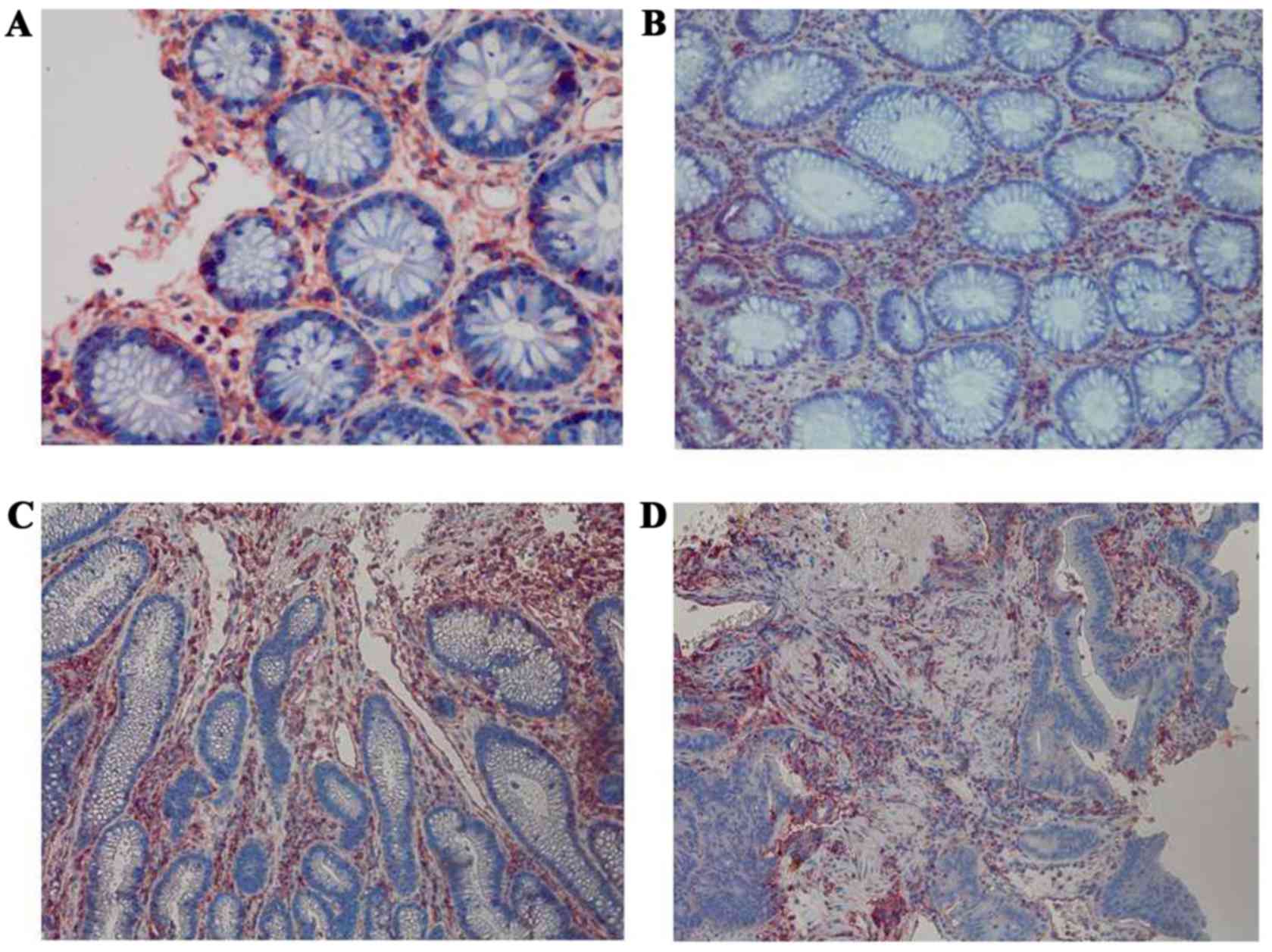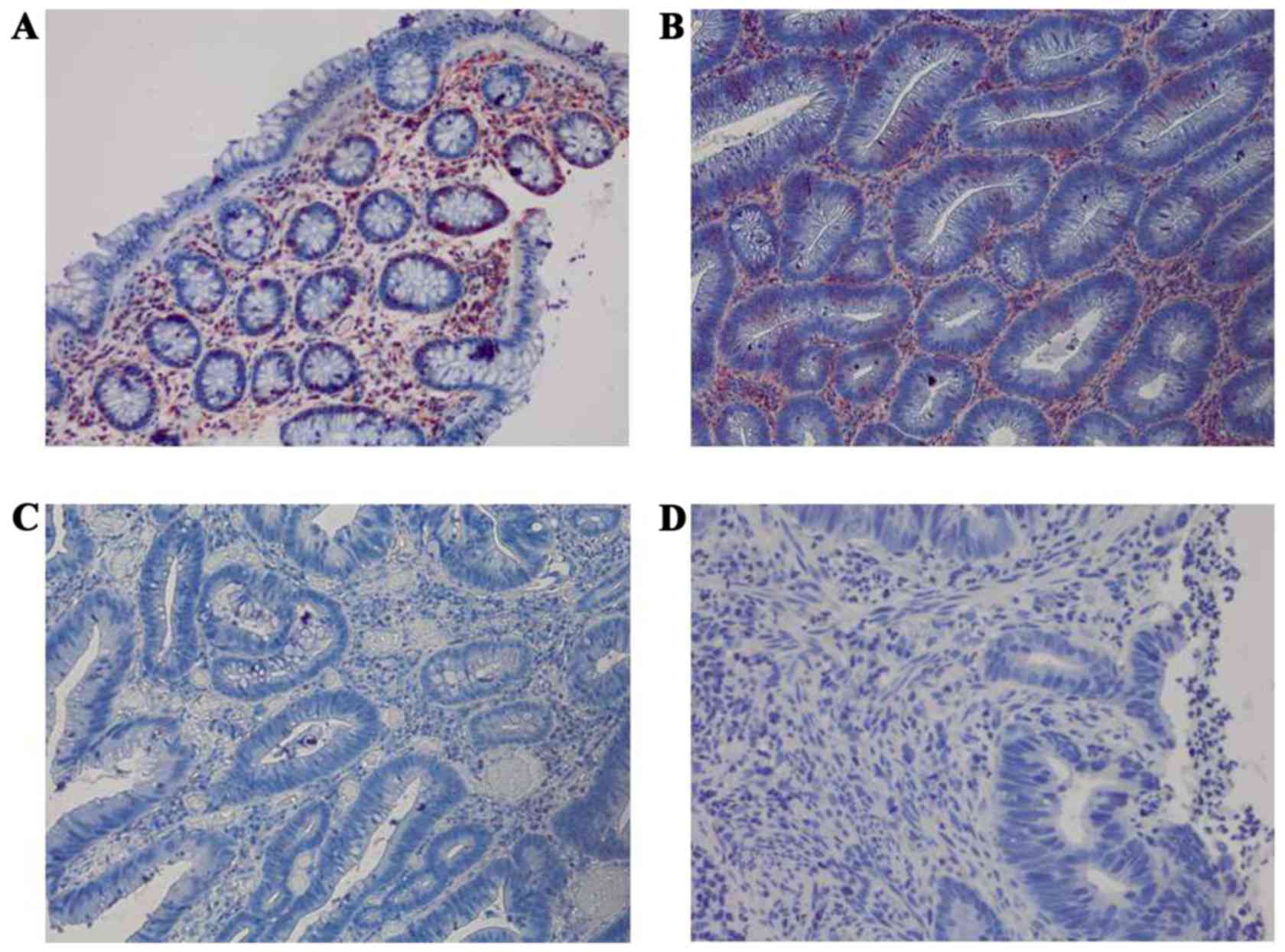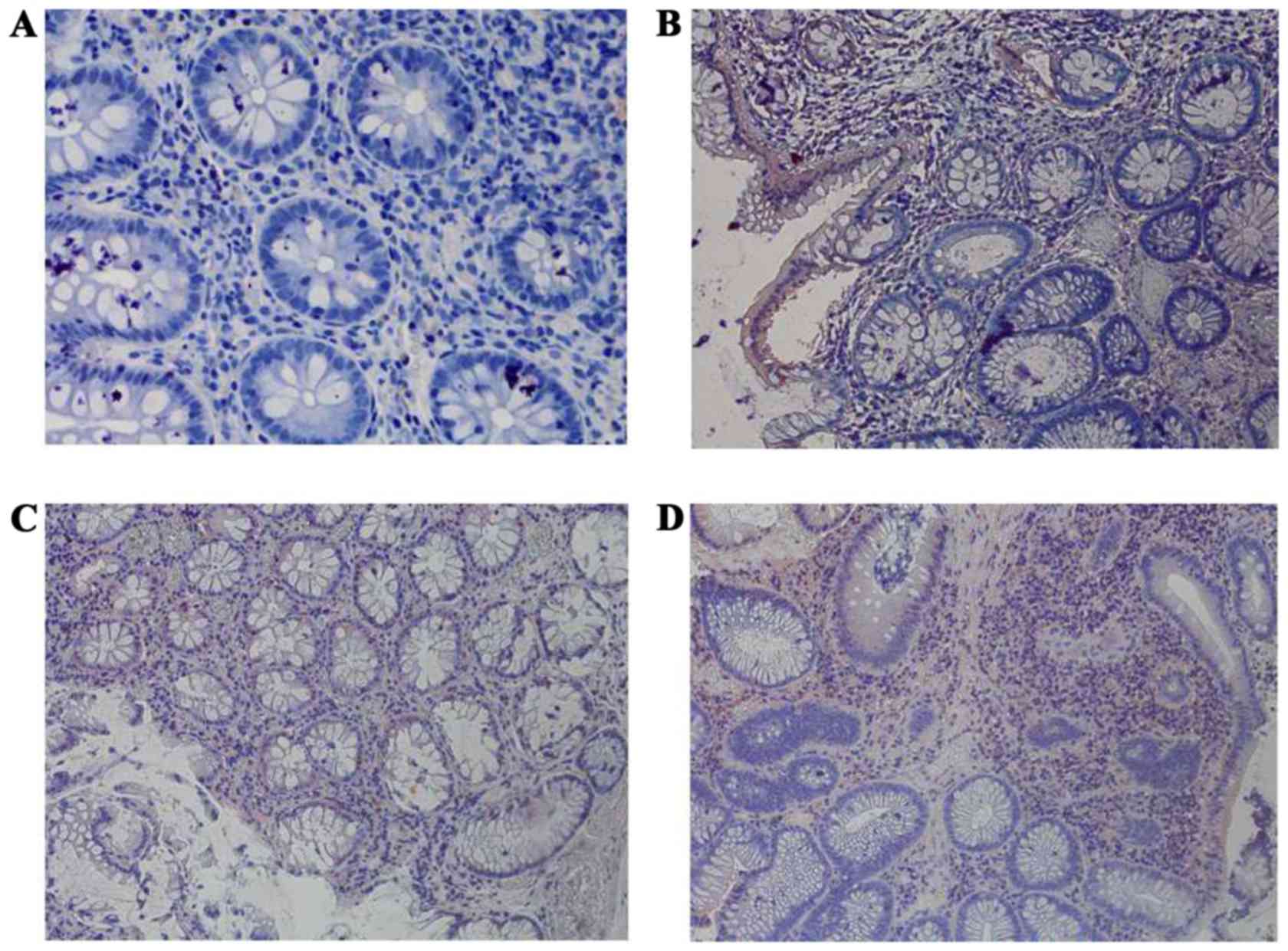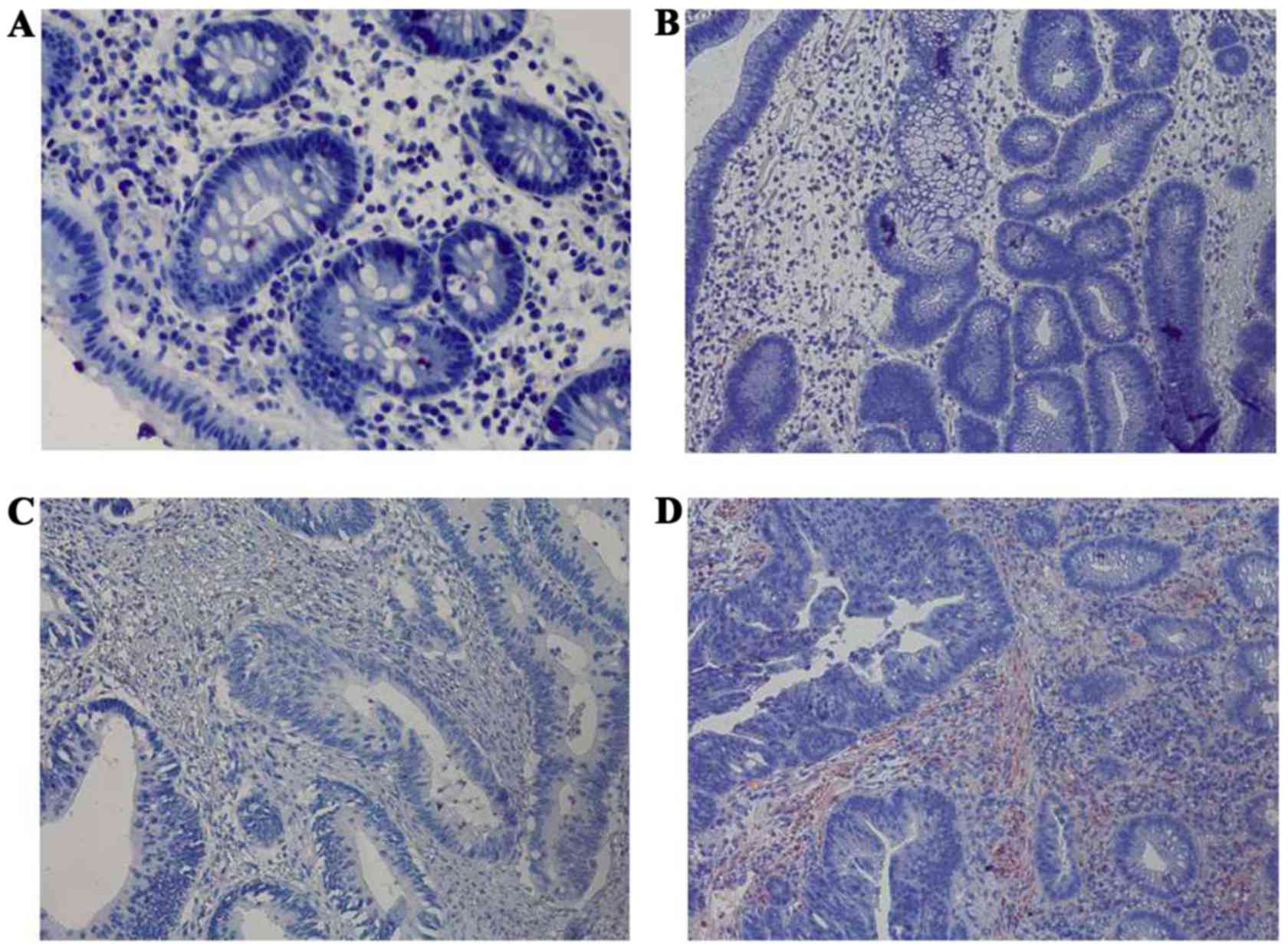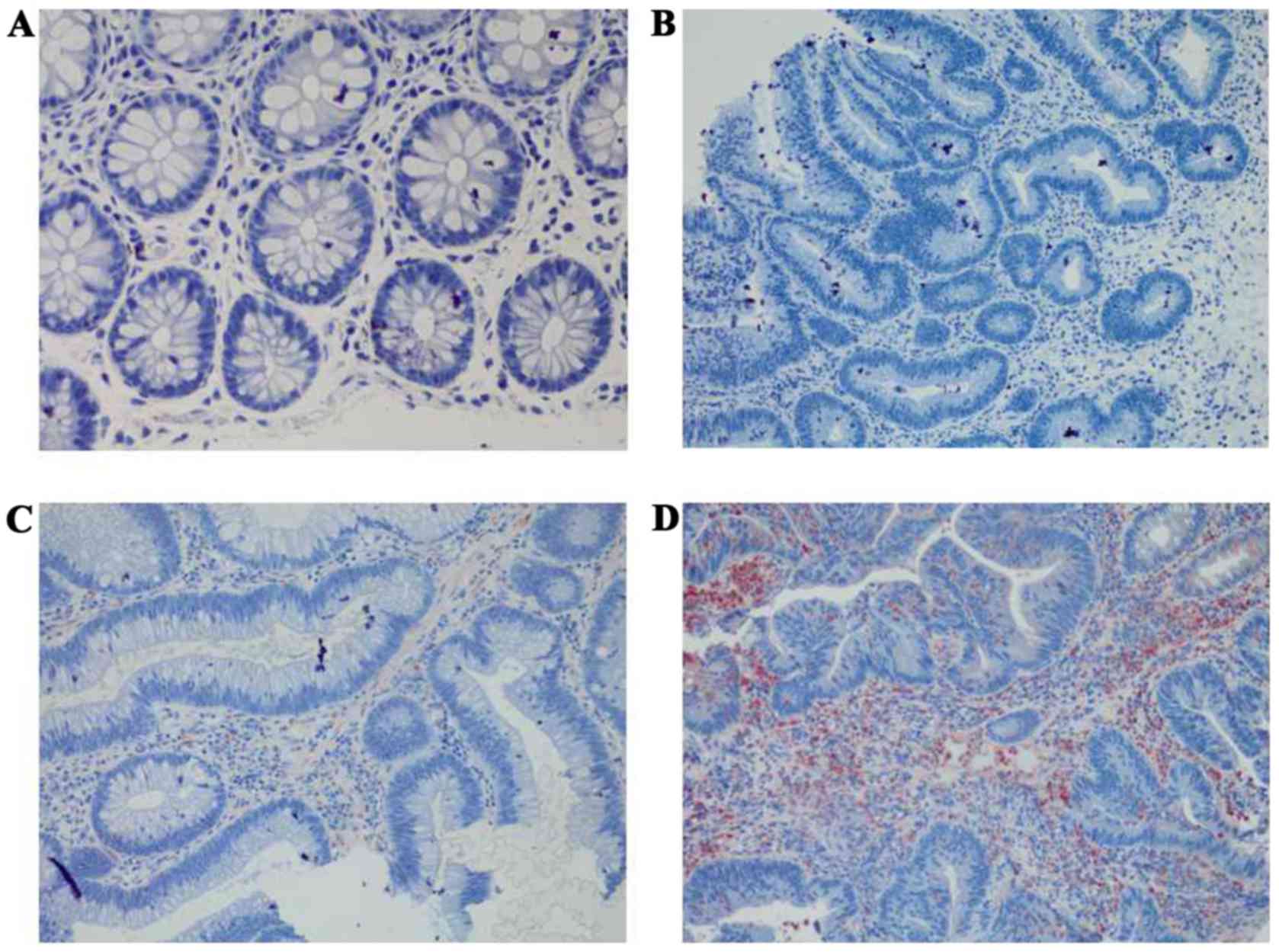Loss of Fas expression and high expression of HLA-E promoting the immune escape of early colorectal cancer cells
- Authors:
- Published online on: March 22, 2017 https://doi.org/10.3892/ol.2017.5891
- Pages: 3379-3386
-
Copyright: © Huang et al. This is an open access article distributed under the terms of Creative Commons Attribution License.
Metrics: Total
Views: 0 (Spandidos Publications: | PMC Statistics: )
Total PDF Downloads: 0 (Spandidos Publications: | PMC Statistics: )
Abstract
Previous studies have investigated the mechanisms of immune evasion of tumor cells in numerous types of advanced solid malignant tumor, and several types of immune preparations have been administered as antitumor adjuvant therapies. However, in the majority of studies, the efficacy of therapies has been revealed to be limited. The present study aimed to investigate the immune evasion mechanisms employed by early colorectal cancer cells and the expression of the molecules associated with immune evasion during the malignant transformation process of normal colorectal epithelial cells to measure the effects of immune intervention for early colorectal cancer, and to improve the efficacy of immunotherapy. A total of 60 colorectal tissues, including 15 normal mucosa, 15 adenoma, 15 early cancer and 15 advanced cancer tissues, from patients undergoing endoscopic procedures in Huadong Hospital Affiliated to Fudan University (Shanghai, China) were collected. A comparison of baseline characteristics among these four groups was performed. The expression levels of human leukocyte antigen‑A (HLA‑A), apoptosis antigen 1 (Fas), c‑c chemokine receptor type 5 (CCR5), Fas ligand (FasL) and HLA‑E in each group were detected by immunohistochemical analysis. Furthermore, 15 patients with advanced colorectal cancer were enrolled into the present study. Advanced cancer and paracancer tissues (normal mucosal tissues 3 cm away from the margin of cancer tissues) were collected from each patient by colonoscopic biopsy. The expression levels of HLA‑A, Fas, CCR5, FasL and HLA‑E in each group were detected by western blot analysis. During the malignant transformation process of normal colorectal epithelial cells, the expression levels of CCR5, FasL and HLA‑E increased significantly (P<0.001), whilst the expression levels of Fas reduced significantly (P=0.0271). In the early cancer group, the expression levels of Fas reduced significantly (P=0.0239), whilst the expression levels of HLA‑E increased significantly (P<0.001) compared with adenoma group. In conclusion, a loss of Fas expression and high expression levels of HLA‑E may promote the immune evasion of early colorectal cancer cells.



